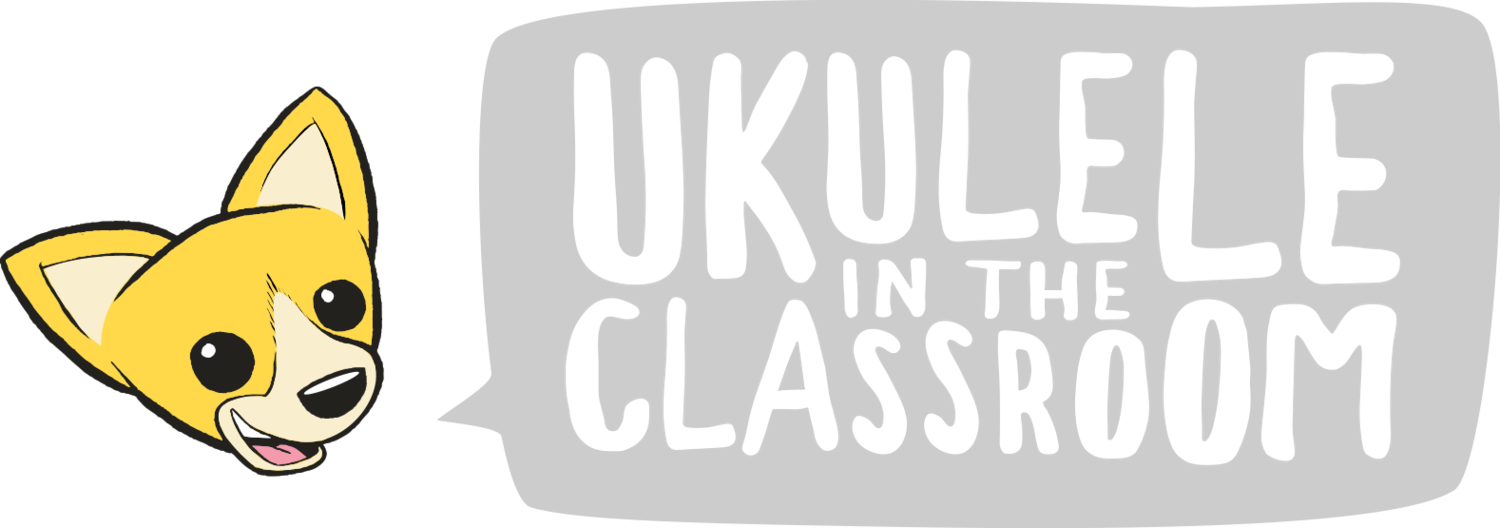There’s more than one way to tune a ukulele. To choose the right tuning for you and your class you’ll have to answer two questions, and we’re going to help you do it.
Question #1: D6 or C6 Tuning?
“C6” and “D6” tuning are short-hand names for the two most popular ways to tune the ukulele (yes, it’s the ukulele version of “Mac vs. PC”).
The strings in C6 tuning are: G, C, E, A (a C6 chord). C6 tuning is undeniably the most popular tuning in the world today.
The strings in D6 tuning are: A, D, F#, B (a D6 chord). Historically, D6 tuning was the more popular tuning in Europe, Canada and the Eastern U. S. A. and is still preferred by many classroom teachers because of its brighter tone, higher pitch and better compatibility with other stringed instruments.
If this were a simple issue, it would have been resolved a long time ago. The fact is, there are pros and cons to both tunings. D6 is brighter, louder, and has the same “easy” keys as guitar, fiddle and mandolin. C6 has a more mellow sound and has the same “easy” keys as a piano.
Ukulele historian Jim Tranquada puts the C vs. D debate in context:
““This is an old and seemingly never-ending argument. While the pioneering methods of Kaai (1906) and Rollinson (1909) both use C tuning, a sampling of the methods that follow give a sense of the unresolved nature of the debate: Kealakai (1914), D tuning; Bailey (1914), C tuning; Kia (1914), D tuning; Kamiki (1916), D tuning; Guckert (1917), C tuning; Stumpf (1917), D tuning.””
While D6 tuning was the more popular tuning during the tin pan alley era, these days C6 tuning has gained great popularity and is by far the most common tuning used in online tutorials and in recently-published ukulele books.
Further Reading: The Spring 2010 issue of Ukulele Yes! is largely devoted to the ukulele tuning debate:
Small Instrument, Big Questions by James Hill
The Great Canadian Tuning Debate by Jamyang Lodto
Ukulele Juggling Act: How to Teach in Two Tunings at Once by James Hill
Conclusion: C6 is undeniably the most popular ukulele tuning. But D6 has greater projection and better compatibility with other stringed instruments.
Question #2: Low or high 4th?
The fourth string of the ukulele (the string closest to your face as you play) is often tuned an octave higher than you might expect (hence the familiar “my dog has fleas” melody). In the classroom context, however, we strongly recommend the use of “low 4th string” tuning (a.k.a. “linear” tuning), where the 4th string is replaced with a thicker string and tuned down an octave.
Why?
It extends the melodic range of the ukulele. More range = more repertoire = more fun.
It clarifies the structure of chords and scales, i.e. it’s a better tool for teaching music.
It’s better for ensemble playing: some students can play melody while others play (lower) accompaniment parts.
Keep in mind:
Converting a ukulele to linear tuning is a reversible procedure.
100% of the lessons in our resources are compatible with both high and low tunings (i.e. a student with a high fourth string will never have to sit out). However, the student with a low fourth string will have access to more material.
“High 4th string” tuning (a.k.a “re-entrant” tuning) has a delightful sound and unique qualities. You should encourage your students to explore it, particularly once they've mastered skills and repertoire at the Book 2 or 3 level. For example, The Ukulele Way is a method that teaches the art of solo ukulele with lessons and repertoire specifically designed for re-entrant tuning. At the outset, however, a ukulele with a low fourth string is arguably a better way to explore the fundamentals of music.
The big question is this: is your primary goal to teach ukulele or to teach music? For instance, if you're working in a music therapy context, high-4th tuning may well be the best option (if for no other reason than it's more “forgiving” for the beginner). However, If your goal is to teach transferrable musicianship skills (e.g. ear training, note reading, improvisation, ensemble skills, music theory, etc.) and you're using the ukulele as a springboard to other instruments, we highly recommend low 4th tuning (which brand/thickness to use? Click here for answers).
Conclusion: the purpose of your ukulele program determines your answer to Question #2.
Whatever You Decide, We Have Resources For You.
In the end, the decision is yours and should be based on a) the needs of your students and b) your own purpose for teaching/learning ukulele. Ukulele in the Classroom books and CDs are available in both C6 tuning and D6 tuning. Click on your choice of tuning to start your order:
Feel free to contact us for further assistance.

